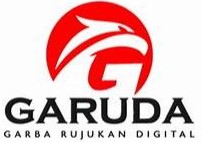Improve TAT Refurbishment Process Excavator 20 Tons in Heavy Equiment Workshop
DOI: https://doi.org/10.25077/metal.6.2.107-116.2022
Author(s)
Refnal Marzuki (Politeknik Negeri Padang)Rino Sukma (Politeknik Negeri Padang)
Nofriyandi R (Politeknik Negeri Padang)
Rusmardi Rusmardi (Politeknik Negeri Padang)
Abstract
Keywords
Full Text:
PDFReferences
E. Handayani, "Efficiency of Heavy Equipment Use in Landfill Construction Work (Final Processing Site) Amd Village, Kec. Muara Bulian Kab. Batanghari (Efisiensi Penggunaan Alat Berat Pada Pekerjaan Pembangunan Tpa (Tempat Pemprosesan Akhir ) Desa Amd Kec. Muara Bulian Kab. Batanghari)". J Ilm Univ Batanghari Jambi 2015;15:90–5.
Handoyo. Hinabi Optimistic that demand for heavy equipment will increase in 2022 2022 (Optimistis Permintaan Alat Berat Meningkat di Tahun 2022 2022). https://newssetup.kontan.co.id/news/hinabi-optimistis- permintaan-alat-berat-meningkat-di-tahun-2022.
M. Sulaiman, M. H. Rahmat, "Analysis of Heavy Equipment Reliability on Productivity Levels Pcs Case Study (Analisis Keandalan Alat Berat Terhadap Tingkat Produktivitas Studi Kasus Pcs)". J Teknol Terap G-Tech 2017;1:33–8. https://doi.org/10.33379/gtech.v1i1.266.
M. Djunaidi, M. F. Sufa, "Proposed Maintenance Interval for Critical Components in Bottle Printing Machine (Mould Gear) Based on Downtime Minimization Criteria (Usulan Interval Perawatan Komponen Kritis Pada Mesin Pencetak Botol (Mould Gear) Berdasarkan Kriteria Minimasi Downtime)". J Tek Gelagar 2007;18:33–41.
N. Susanto, D. Azis, "Turn Around Time (TAT) Analysis in Aircraft Component Pooling Process: A Case Study of Delay in Returning CRJ 1000 Nextgen Aircraft Components at PT. GAA. (Analisis Turn Around Time (TAT) Pada Proses Pooling Komponen Pesawat : Studi Kasus Keterlambatan Pengembalian Komponen Pesawat CRJ 1000 Nextgen di PT. GAA)", J Tek Ind 2016;XI:21–6.
S. Muis, "Six Sigma Methodology; Theory and application in the Manufacturing Environment (Metodologi Six Sigma; Teori dan aplikasi di Lingkungan Pabrikasi)", Graha Ilmu, Yogyakarta, 2019
E.A. Zamora, "Value Chain Analysis: A Brief Review. Asian", J Innov Policy 2016;5:116–28. https://doi.org/10.7545/ajip.2016.5.2.116.
G. Vincent, "Guidelines for the Implementation of Six Sigma Programs Integrated with ISO 9001:2000, MBNQA, and HACCP (Pedoman Implementasi Program Six Sigma Terintegrasi Dengan ISO 9001:2000, MBNQA, dan HACCP)", Gramedia, 2022, pp-37
F. Firmansyah, A. Ginanjar and L. Herdiani, "Effective Voice of Customer Design to Support Customer Relationship Management Activities (Case Study: Toyota Auto 2000 Asia Afrika Bandung) (Rancangan Voice of Customer yang Efektif Sebagai Pendukung Kegiatan Customer Relationship Management (Studi Kasus: Toyota Auto 2000 Asia Afrika Bandung))", J TIARSIE 2021;17:117–24.
S.A. Horev, "The Ishikawa Diagram: Identify problems and take action, Publisher 50Minutes.com", 2016
J.S. Pischke and J. Angrist, "Mastering "Metrics: The Path from Cause to Effect", 2014.
O. Roderich, “5 Whys: The Effective Root Cause Analysis (Five whys improve your mind”, 2020.
G. Blokdyk, “RACI Matrix A Complate Guide, 5STARCooks”, 2019.
 Article Metrics
Article Metrics
This article has been read : 147 timesPDF file viewed/downloaded : 35 times
Copyright (c) 2022 Refnal Marzuki, Rino Sukma, Nofriyandi R, Rusmardi Rusmardi
View METAL's Stats

This work is licensed under a Creative Commons Attribution-NonCommercial-ShareAlike 4.0 International License.







